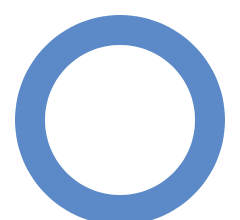In his latest Wall Street Journal column (“Drugs That Are as Smart as Our Diseases”), biologist/author Matt Ridley bemoans the plummeting efficiency of drug discovery in the pharmaceutical industry. He points to a disturbing paradox: while identifying and sequencing genes of pathogens and cancer cells has become much cheaper in a short period of time, the number of new drug candidates (based at least in part on our knowledge of those genes) has dropped.
In his latest Wall Street Journal column (“Drugs That Are as Smart as Our Diseases”), biologist/author Matt Ridley bemoans the plummeting efficiency of drug discovery in the pharmaceutical industry. He points to a disturbing paradox: while identifying and sequencing genes of pathogens and cancer cells has become much cheaper in a short period of time, the number of new drug candidates (based at least in part on our knowledge of those genes) has dropped. According to Ridley, new molecule approvals per billions of dollars of inflation-adjusted R&D amounts to no more than one percent of the number of approvals in 1950. And as we’re all aware, this decline in innovation is all the more dire because the pharmaceutical industry needs to replace so-called “blockbuster” drugs that are about to lose their patent protections if it is to continue to keep investors satisfied and fuel future innovation.
So, why hasn’t the same industry that gave us statins, Herceptin®, and vaccines come up with a new generation of treatments? The biggest problem might lie in its success. Researchers today confront an enormous—and growing—amount of genetic and biochemical information as the search continues for newer, more effective drugs. As we generate more data, we are increasing our understanding of the complexity of biological processes underlying disease states. While this better understanding can lead to innovation, it also has uncovered obstacles. For example, scientists have found that signaling pathways leading to cancers are replete with redundancy, shortcuts and other molecular detours that block the activity of cancer drugs. Sometimes, these pathways can help eliminate or prevent cancer; at other times they can exacerbate it.
It also has become increasingly clear that cancers are not what we originally defined them to be. There are 200 types of cancer; most are defined by the tissue in which they are predominantly found or in which they originated (in the case of metastasis). This location-based classification was useful for surgical solutions (which were once the only options available), and could provide some sense of prognosis. However, these location-based classifications do not capture the biological diversity of cancer.
Herceptin® provides a useful glimpse into cancer’s complexity (as well as into the challenges in treating cancer’s manifestations). When introduced, Herceptin proved very effective against breast cancers triggered by mutations in HER2. However, many cancers are resistant to Herceptin, and researchers are now using a “Whack-a-Mole” approach, relying on successive hammer attacks to fight multiple mutations and pathways that pop-up to bypass effects of the “targeted” drug. In fact, Tanizaki and colleagues (full text by subscription) found that HER2, HER3 and MET are factors not only in breast cancer, but lung cancer as well. It’s possible that the “Whack-a-Mole” approach can address the multiple targets that characterize the molecular mechanisms of cancer, while addressing cancers by their genomic and signaling profiles. But that approach will become more effective in those cases where we can simultaneously hit multiple drug targets. It involves taking cancer treatment to the next level.
Clearly, finding the “moles” and utilizing “multiple hammers” will require more and more information, and represents a change in drug discovery strategy from the “one disease-one target” biochemical approach. The World Health Organization has recommended reclassifying lung cancers (subscription required for full text) by immunohistochemical criteria, for example, and continues to work on expanding definitions of cancers to gene or cell signal.
Revisiting the earlier-raised question of “Why the dearth in a new generation of treatments,” I wonder: Will this change in drug discovery strategy help us develop more effective drugs for cancer patients? Can advances in areas like systems biology find more answers that will lead to new options in the treatment of cancer and other diseases? Can we move beyond the “Whack-a Mole” hammer to make smarter treatments? Please share your thoughts with us here.
This post was originally published on the Popper and Co Blog.





